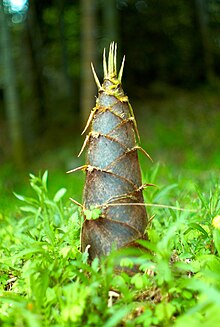Recorded usage
A "Madras civilian", in his travel description from 1820s India, referred to this use of bamboo as a well-known punishment in Ceylon. [1] The use of live trees impaling people as they grow was recorded in the 19th century, when the Siamese used nipah palm sprouts in the same way as bamboo torture on the Malays during the 1821 Siamese invasion of Kedah, among other punishments. [2] [3] [4]
After World War II, stories circulated of Japanese soldiers inflicting "bamboo torture" upon Allied prisoners of war, securely tying the victim in place above a young bamboo shoot. [5] Over several days, the sharp, fast-growing shoot would first puncture, then completely penetrate the victim's body, eventually emerging through the other side. [6] In her Hakka Soul memoir, Chinese poet and author Woon-Ping Chin [7] mentions the "bamboo torture" as one of the tortures that locals believed the Japanese performed on POWs. [8]
The cast of the TV program MythBusters investigated bamboo torture in a 2008 episode and found that a bamboo shoot can penetrate through several inches of ballistic gelatin in three days. For research purposes, ballistic gelatin is considered comparable to human flesh, and the experiment thus supported the viability of this form of torture, though not its historical accuracy. [9] [10]
This page is based on this
Wikipedia article Text is available under the
CC BY-SA 4.0 license; additional terms may apply.
Images, videos and audio are available under their respective licenses.
